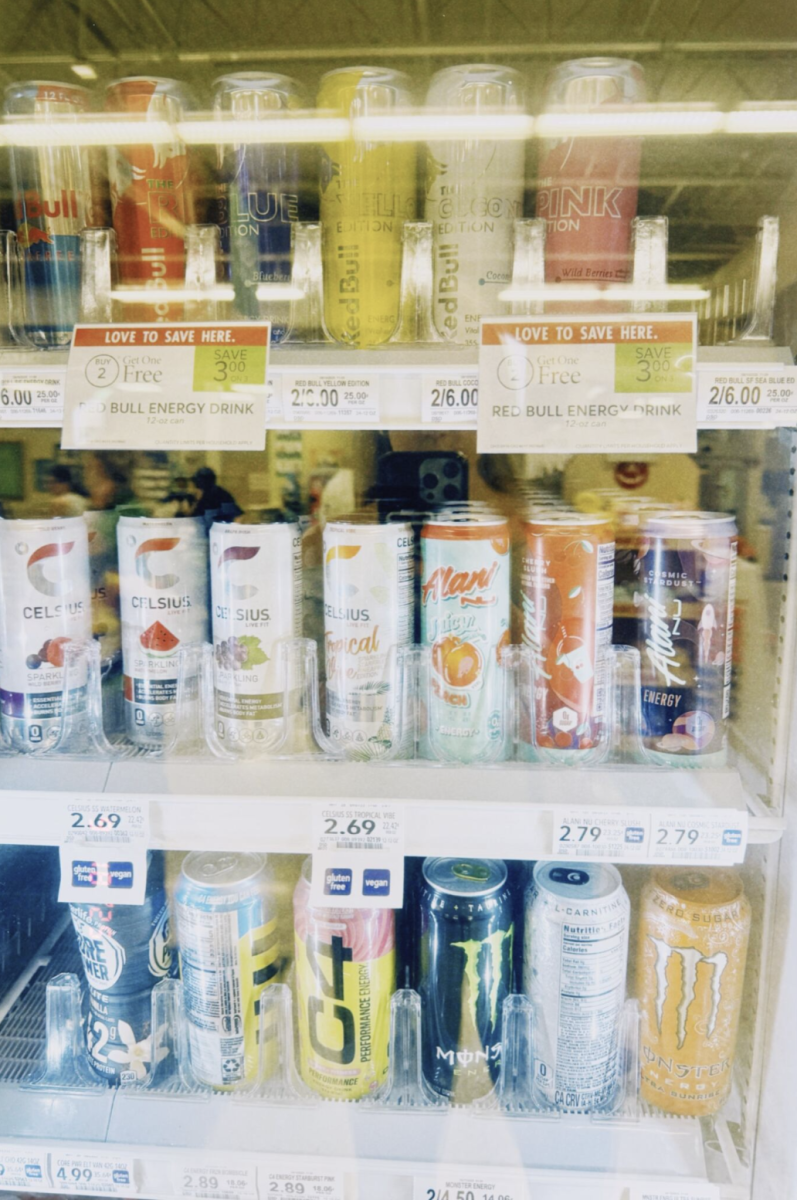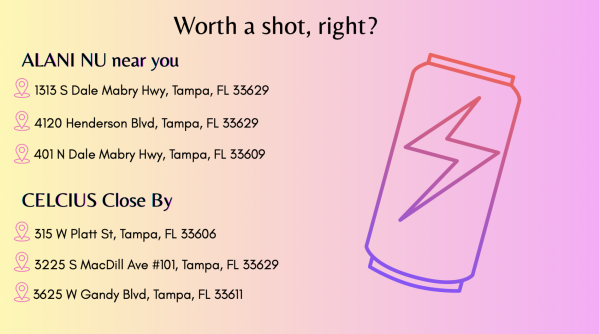Energy drinks have become a common sight in high schools, from early morning classes to late-night study sessions. Two of the most popular options among students are Alani Nu and Celsius. Both promise clean energy and focus without added sugar, but they have different appeals that make them stand out in the nation and on campus.
Celsius gained popularity in 2015 after rebranding as a fitness energy drink. The company promotes its product as a metabolism booster and calorie burner, citing ingredients like green tea extract, guarana and ginger root. Each can contains around 200 milligrams of caffeine, roughly equivalent to two cups of coffee. The drink is sugar-free, which appeals to students who want a quick energy boost without worrying about a sugar crash. Its availability is also a significant factor in its popularity — Celsius is stocked in convenience stores, gas stations and even some school vending machines.
Morgan Sayer, a junior at Plant High School, said she prefers Celsius for its lighter taste and convenience. “Peach Vibe is my favorite flavor,” Sayer said. However, she also enjoys Alani Nu for its unique flavors. “Juicy Peach is my favorite flavor for Alani,” Sayer said, adding that both drinks help her stay energized during busy school days.
Alani Nu, a relatively new competitor, entered the market in 2018 and has quickly gained a strong following, particularly among teenagers and young adults. Like Celsius, Alani Nu contains 200 milligrams of caffeine per can and no sugar, but it stands out for its wide range of unique flavors. Seasonal releases, such as Witch’s Brew in the fall or Cherry Slush in the summer, often generate excitement on social media. For students, the variety and limited-time options make Alani feel more like a fun experience than just an energy boost.
Kaia O’Malley, a freshman, said she prefers Alani Nu for its variety of flavors, specifically Orange Kiss. “It tastes like oranges, which is one of my favorite fruits, and it’s very refreshing,” O’Malley said. While she occasionally drinks Celsius, O’Malley said it sometimes leaves her feeling jittery. “I usually have one of these drinks in the morning before school or sometimes before volleyball to help me stay focused,” O’Malley said.
While both drinks share similar nutrition profiles, Alani Nu’s focus on unique, rotating flavors and bright, colorful packaging has made it a favorite in many high schools. Its release creates a buzz, giving students something to look forward to. Celsius may be the reliable, everyday option — but Alani Nu feels like the more exciting choice.
Both drinks have sparked conversation about health effects. Nutritionists caution that high caffeine intake can cause jitters, anxiety, headaches or trouble sleeping, especially among teens who already lack adequate sleep.
According to a study published in the Journal of Public Health Policy (JPHP), “Energy drink consumption is a potential health hazard for the general population and especially alarming for youth due to high levels of caffeine and novel ingredients not normally found in the food supply. The American Academy of Pediatrics (AAP) stated that energy drinks have no place in the diet of children and adolescents due to their “stimulant content”, but energy drink manufacturers continue to advertise directly to adolescents in media also viewed by children.”
While this may be true, when consumed in moderation, both brands offer a lower-sugar alternative to sodas or coffeehouse drinks packed with extra calories, making them a convenient option for students and professionals seeking a quick energy boost without the guilt. Additionally, many of these drinks contain vitamins and natural ingredients that may support metabolism and focus, offering benefits beyond just caffeine.
Whether students choose Celsius for its consistency and availability or Alani Nu for its flavor variety and seasonal excitement, both drinks continue to fuel long school days and busy extracurricular schedules — with Alani often taking the lead in flavor innovation.


